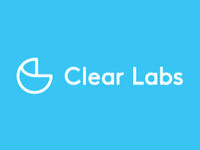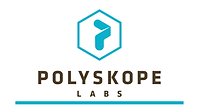Clear Food--the consumer initiative of the new food analytics company Clear Labs--launched today to bring greater trust to the food industry. Clear Food’s monthly food reports will help consumers identify the most reliable, high-quality foods based on in-depth molecular analysis. The company's objective rating system--Clear Score--gives consumers the information they need to make informed purchasing decisions. The reports, published at ClearFood.com, will be available to the public at no cost.
Clear Food’s monthly reports are powered by Clear Labs’ proprietary food-analytics platform, based on next-generation genomic analysis. By evaluating food at the molecular level, Clear Labs is able to surface insights that go beyond a food’s ingredient label and packaging claims. Their analyses can discover substitutions, allergens, gluten, bacterial contamination and GMOs.
Each sample analyzed for the Clear Food reports receives a Clear Score, which is a representation of how closely a product's label claims match its actual molecular contents. The higher the score, the more closely a product adheres to its label claims. Clear Score is the only scientific rating system that gives consumers an objective view into the quality and value of the foods and brands they buy.
To create the Clear Score, each sample is analyzed at the molecular level using Clear Labs’ proprietary DNA sequencing workflow and screened for major, medium, and minor substitution. Points are deducted for every discrepancy or label inaccuracy the tests reveal. Next, each sample is examined for nutrition-content accuracy, such as carbs, fat, calories, and protein. Finally, for certain categories of foods, the Clear Score factors in off-label tests for hormones, pesticides, antibiotics, and heavy metals, among others.
All Clear Score calculations are run through a secondary-analysis pipeline, scrubbed for statistical accuracy and error, and delivered to consumers via Clear Food’s monthly food category reports at ClearFood.com.
"The food industry has been a black box for too long. Food consumers have to trust that food labels are accurate, but that isn’t always the case,” says Sasan Amini, Clear Labs CEO and co-founder. “We’ve found a 10-15% rate of discrepancy between labeled ingredients and actual ingredients across our internal tests to date. We started Clear Food to pave the way for consumers to make more informed choices about what they eat while rewarding companies and products with integrity — those that are what they say they are.”
To produce the first Clear Food report, which is now available at ClearFood.com, the company hand collected 345 samples of hot dogs and sausages — veggie dogs, sausages, and old-fashioned, all-beef hot dogs — from 75 different brands at 10 different retailers. They found that 14.4% of the samples were problematic in some way, due to ingredient substitution, addition, or hygienic issues.
“As a culture, we’re at a tipping point in our relationship with food -- we want to be certain that what we’re getting is safe and of a quality that we can trust,” says Mahni Ghorashi, co-founder of Clear Labs. “Consumers are ready for better food, and industry is under pressure to raise the bar. We think the information we’re providing through Clear Food will help consumers speak with their dollars and insist on only the best.”






